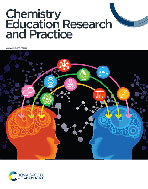Adapting gaze-transition entropy analysis to compare participants’ problem solving approaches for chemistry word problems
Abstract
A method is adapted for calculating two measures of entropy for gaze transitions to summarize and statistically compare eye-tracking data. A review of related eye-tracking studies sets the context for this approach. We argue that entropy analysis captures rich data that allows for robust statistical comparisons and can be used for more subtle distinctions between groups of individuals, expanding the scope and potential for eye-tracking applications and complementing other analysis methods. Results from two chemistry education studies help to illuminate this argument and areas for further research. The first experiment compared the viewing patterns of twenty-five undergraduate students and seven instructors across word problems of general chemistry topics. The second experiment compared viewing patterns for eighteen undergraduate students divided into three intervention groups with a pre- and post-test of five problems involving periodic trends. Entropy analysis of the data from these two experiments revealed significant differences between types of questions and groups of participants that complement both visualization techniques like heat maps and quantitative analysis methods like fixation counts. Finally, we suggest several considerations for other science education researchers to standardize entropy analyses including normalizing entropy terms, choosing between collapsed sequences or transitions within areas of interest, and noting if fixations in blank spaces are included in the analysis. These results and discussion help to make this powerful analysis technique more accessible and valuable for eye-tracking work in the field of science education research.


 Please wait while we load your content...
Please wait while we load your content...